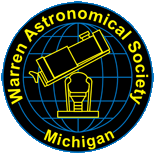| |||||||
 Lights... Camera... Action... Getting Started in Astrophotography
Lights... Camera... Action... Getting Started in Astrophotographyby Clayton Kessler Astrophotography does not have to be a big "production". You can take very satisfying, very professional looking, astrophotos with fairly minimal equipment. If this is a part of the hobby that interests you I urge you to take the plunge! Let me give you some background. I have been in the hobby of astronomy for about three years. I don't make any claim to be some kind of "expert", [continued]  Solar Observations
Solar Observationsby Marty Kunz Have you seen the sun lately? It looks as if 1999 is getting off to a good start. Every 11 years the sunspot cycle reaches it's maximum. Usually a few spots will appear with increasing numbers as the maximum approaches. However this cycle has started out with a lot of spots and may be the [continued]  Astro Chatter
Astro Chatterby Larry Kalinowski If you haven't seen Apple's new iMac, then you've got quite a kick coming. It's candy for the eyes. You can just eat it all up in one gulp. No sharp corners or beige tones. It's translucent sides reveal its tempting innards and teardrop shape. The rounded corners, make you want to slide your fingers [continued]  SETI@home
SETI@homeby David Olceski SETI@home is a scientific experiment that will harness the power of hundreds of thousands of Internet-connected computers in the Search for Extra-Terrestrial Intelligence (SETI). You can participate by running a screensaver program that downloads and analyzes radio telescope data. There's a small but captivating possibility that your computer will detect the faint murmur of a civilization beyond Earth. To take part in this endeavor, go to http://www.setiathome.ssl.berkeley.edu |
 Steve Greene by Ceil Bondono Before you learn more about the topic of this month's 'In Focus', Steve Greene wanted me to be sure and mention that as the WAS incoming president he promises no impeachable offenses! On a more serious note, Steve says [continued]  Away from the Eyepiece
Away from the Eyepieceby John Herrgott Last month I promised a report on Star Hill Inn. My intent was to spend a week at the inn and then to write of my experiences under their skies. The trip did not take place due to an unavoidable family obligation. Nonetheless [continued] $$ Treasury Note by Steve Greene As of January 1, 1999 the dues rates will be changed. This decision was made at the November 12, 1998 board meeting. This rate will keep the club solvent for the upcoming year. The rates will be as follows: Family $37.00; Individual $30.00; Sr. Citizen & College Student $22.00; Student $17.00. All new memberships and renewals will be billed at these rates after January 1, 1999.  New Members
New Membersby Joe Van Poucker The thing that makes the Warren Astronomical Society a great are its members. We are very happy to announce the following new members who joined during December of 1998. Please extend them a warm welcome. Scott & Theresa Bennett, of Royal Oak Paul & Lisa Zook and Family, of Shelby Township  Minutes of Meetings
Minutes of Meetingsby Bob Watt |

